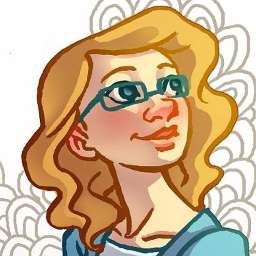Cheeks are basically flesh that comes down off the cheekbones and fills in the space between them and the top of the chin.

So that means cheeks happen below the cheekbones. The flesh of the cheek curves off the top of the cheekbone and rests in a soft round mass below it.

So while the cheekbone determines where the cheek will start, the weight of the cheek determines its shape. On a thin, tight cheek the bulk of the shape will be up high near the bone because there’s not much weight to pull it down.

But on a full cheek the flesh will weigh it down and the shape will rest lower.

The cheeks (or lack of cheeks if it’s a really slim face) frame the “muzzle” area that the nose and mouth make.

Because of this the shape of the cheek will squash and stretch a lot as the face moves.

This is where you get a lot of the little overlaps and wrinkles around the eyes and mouth when drawing expressions.




